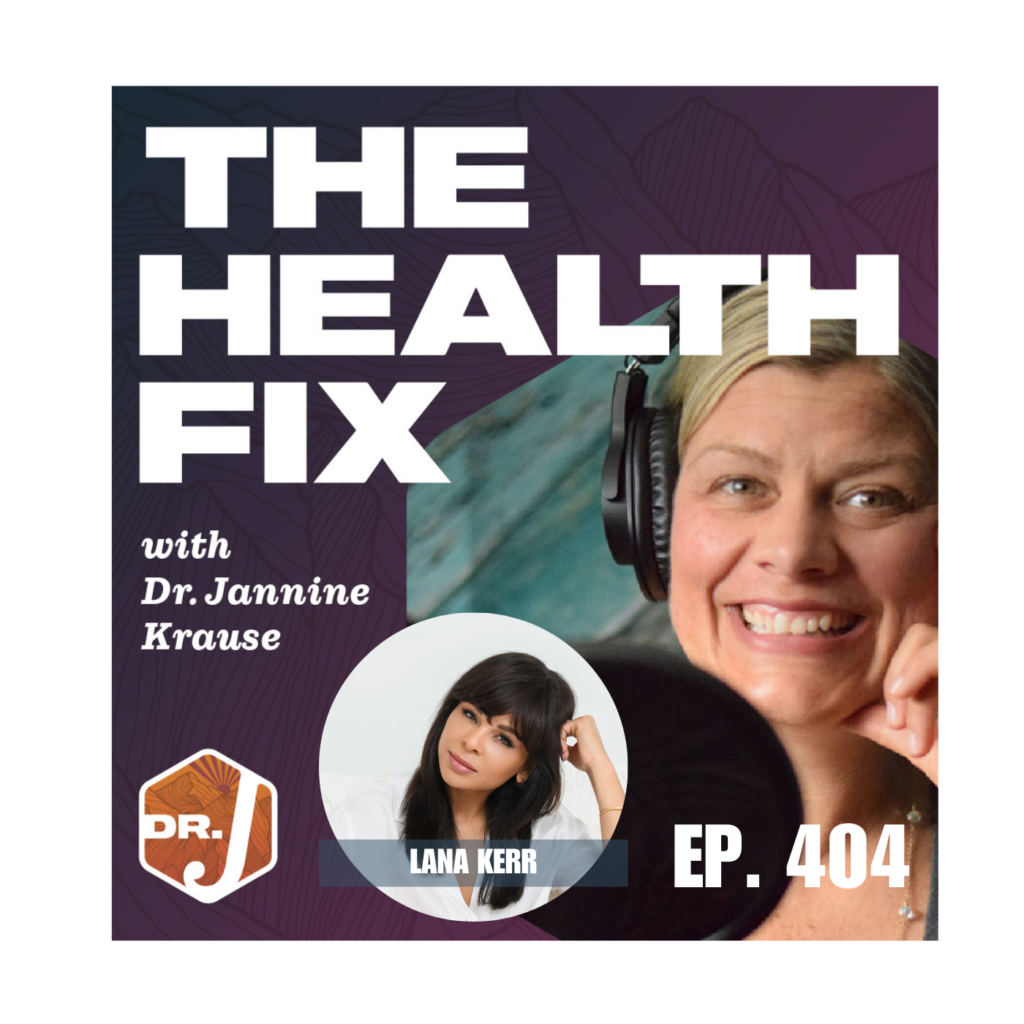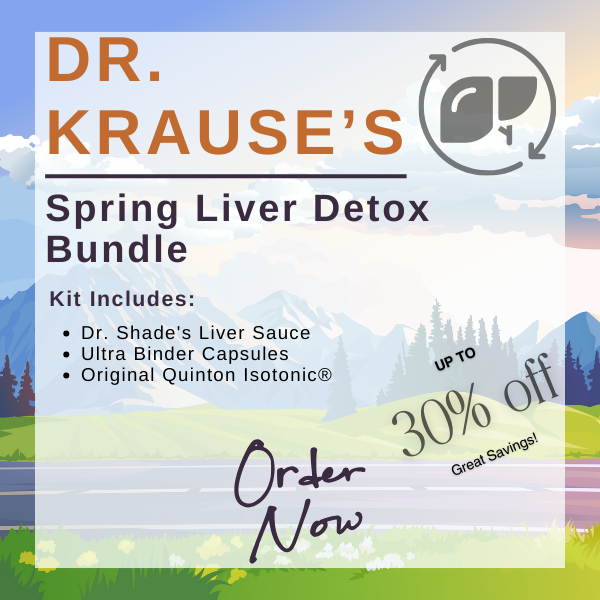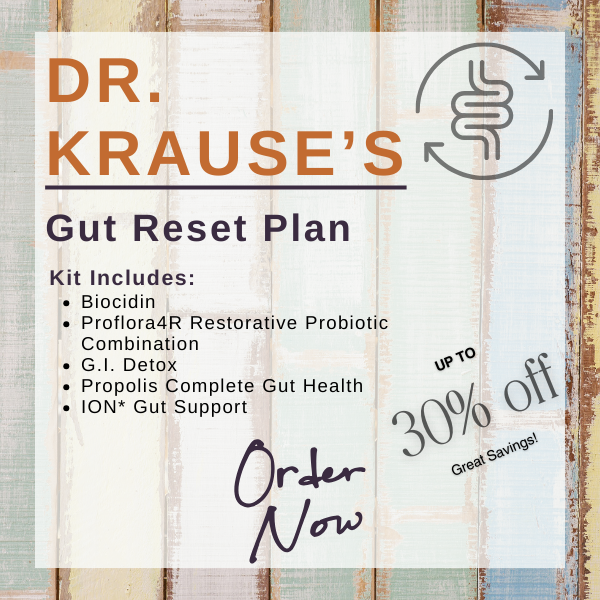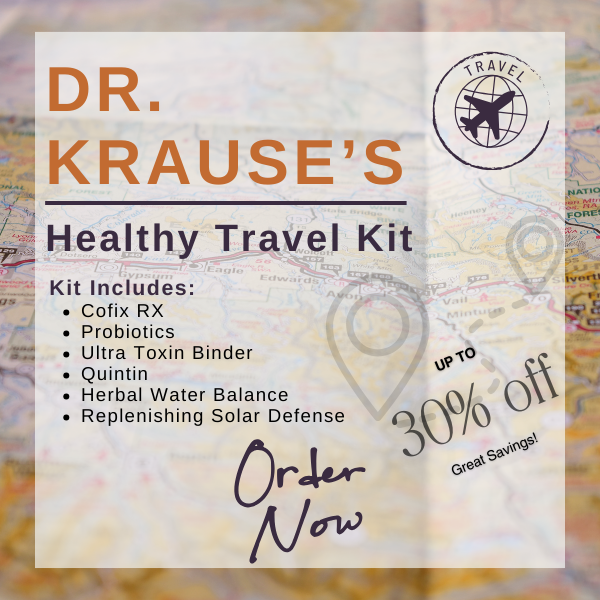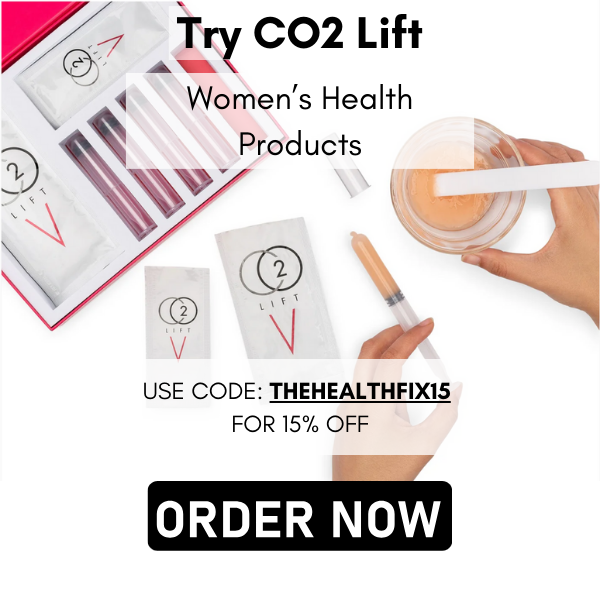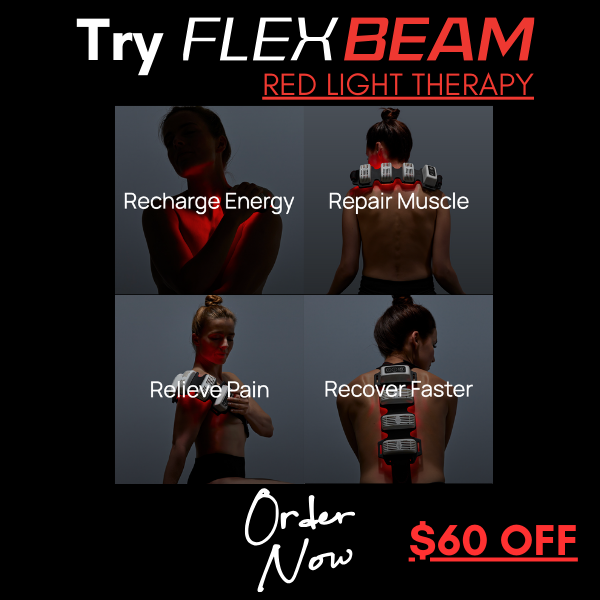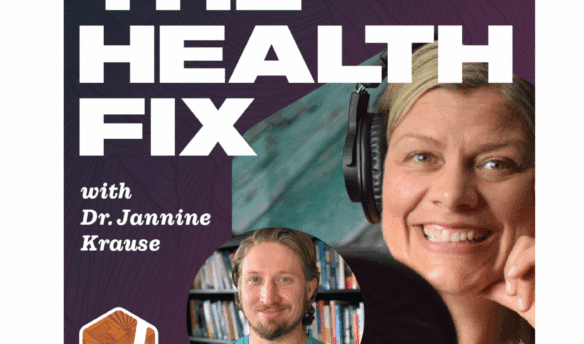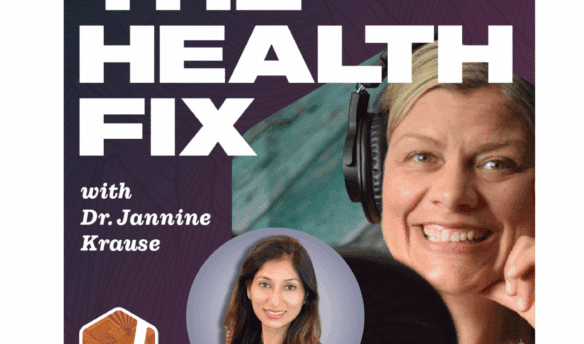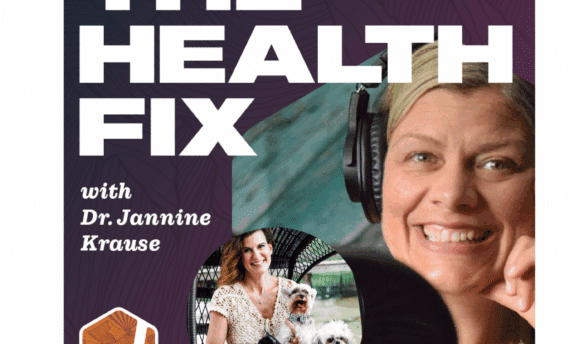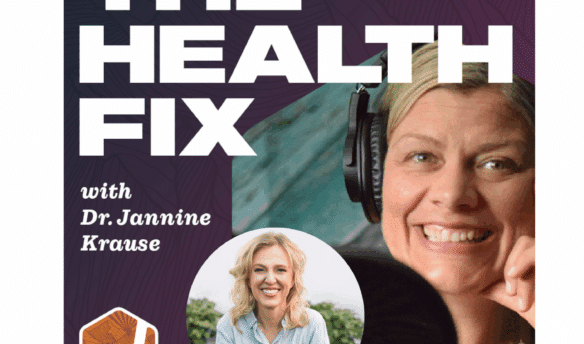Noticing changes in your sex drive, lubrication and sensitivity? Making excuses to avoid intimacy because things down below aren’t feeling quite right? Bleeding, dryness or pain got you wondering if this is what you have to look forward to in the future? Frequent bladder or vaginal infections? If you answered yes to any of these, you’re not alone! Vaginal changes after having kids and with age can lead to a variety of symptoms that impact health, relationships, intimacy and self confidence. Lana Kerr noticed changes in her vaginal health after the birth of her first child and then noticed a shift as she got older. On a mission to restore her youthful glow, vaginal health and enjoyment of intimacy she discovered the benefits of carbon dioxide therapy for the skin and created CO2Lift and CO2LiftV for fast skin regeneration as well as increased vaginal lubrication and sensitivity. In this episode of The Health Fix Podcast, Dr. Jannine Krause interviews Lana Kerr on how CO2Lift products work and the proven benefits of her CO2Lift carboxy gel products.
Dr. Krause’s Protocols
Instructions Included
Traveling soon? Looking to detox or reset your gut? Try one of Dr. Krause’s Fullscript plans.
What You’ll Learn In This Episode:
- How aging atrophied vaginal tissue can go from feeling like sandpaper to butter
- The connection between circulation, vaginal atrophy and stress incontinence
- How hydroxy treatments are increasing skin hydration by 117%
- Why skin barrier reconditioning with carboxy is helping lichen sclerosis, eczema, & psoriasis
- How carboxy treatments are working for erectile dysfunction and testicle enhancement
Resources From The Show:
- CO2 Lift Products
- Discount code for CO2 Lift Products – THEHEALTHFIX15
- Instagram – CO2Lift and CO2LiftV
- Get Lana’s FREE Ebook – Click Here
Our Partners
Podcast Transcript
JANNINE: [Intro] Welcome to the Health Fix Podcast where health junkies get their weekly fix of tips, tools and techniques to have limitless energy, sharp minds and fit physics for life. Hey, HealthJunkies, Dr. Jeanine Krause here. I am looking for some help from you all, and what I’m looking for is some inspiration, some inspirational stories that I can share of men and women, defying aging and defying it by crossing things off their bucket list that maybe they thought they could never do. Maybe coming back from an injury, starting something new, like skiing at 40 years old. Whatever it may be, I want to know about these stories and I want to interview folks. Maybe it’s you, maybe it’s someone you know, doesn’t matter. I want to help inspire folks out there that you don’t have to follow social aging norms. You can defy stuff. You can get better as you get older. You can make so much progress at any age. You can build muscle at any age. You can have a stronger heart at any age and you can crush all those things you want to do on your bucket list. Just because your older doesn’t mean you have to give up on yourself and your dreams. And this is something that I want to share and inspire folks with, and so if you have a story or someone you know, email us at info@ doctorspelledout. So d-o-c-t-o-r-j-k-r-a-u-s-e-n-d.com https://doctorjkrausend.com. Let’s spread the word about how amazing life can be as you get older and all the cool things that you can do. Alright, health junkies. I’m counting on you. Let’s get some emails in and let’s get some awesome stories on the podcast.
JANNINE: Hey, health junkies. On this episode of the HealthFix podcast, I’m interviewing Lana Kerr. She’s the founder and CEO of Lumisque, the company that makes the CO2 lift and CO2LIFTV. Now what the heck’s that? That’s okay. We’ll tell you all about it. It’s going to be a spicy podcast because we’re going to be talking about vaginal health. We’re going to be talking about even health for men to help with erectile tissue, erectile dysfunction. Also, working on plumping up testicles. Now you’ve never heard me say things like this on the podcast before, so this one’s going to be a good one because you know what? So many people come to me having issues in the bedroom, having issues with down below, whether it’s chronic irritation, having bladder infections, just not feeling right down there and then losing the joy for getting busy in the bedroom. Now, CO2 lift, I got to try it. Good stuff. Notice some changes in myself as well. But of course, I want you to kind of listen in and see what you think of this amazing technology and what Lana Kerr has to say. So let’s introduce you to Lana Kerr founder of the CO2 lift and CO2LIFTV.
JANNINE: Hey, health junkies. Welcome to another episode of The Health Fix. I have Lana Kerr on today and we are going to be talking about vaginal health and what you can do and kind of talking a little bit about things that ladies just don’t talk about. So first, I want to introduce you to Lana. So Lana, welcome to the health fix podcast.
LANA: It’s so great to be here. Thank you so much, Jenny, for having me.
JANNINE: Well, it’s my pleasure. I have poured over your website and all the two offer for skincare in general. And I think one of the things that ladies forget about as we get older is that our skin on our face is just as important as our skin in our vaginal area. It is skin and we forget that. You’ve and you’ve noticed that you have your own story about how you were noticing things were changing and went to the doc and she was kind of uncomfortable. I don’t know. Well, what do we do with this? And I found the same thing to happen when folks come to me. They’re like, Hey, I can talk to you about anything. So doc, what do I do about this? So Lana, give us the backstory here to the CO2 V lift and tell us your experience of it created this product.
LANA: Awesome. First of all, Jannine, I’m so grateful that you have this type of conversations just because I think more and more of these need to be had. Women, we don’t talk about it enough. So again, thank you for having me. I am, you know, again, a lot of things that I have been passionate about are things that stem from things that I need. When I find a solution to them, I feel, you know, I’m not that different from so many women and this could benefit them as well. So as you mentioned, we do have something for skin. That’s always been very important to me in terms of being the best you can be in terms of your parents, how you feel, how you look. So the Carboxy was just a great discovery for us. I’ll start with that to answer the question for listeners. Carboxy therapy is something a treatment that’s very old. You know, it stems back to the 1100s, you know, when the the samurai warriors would bathe in the carbonic springs, hot springs in Japan after they fought, it’s quickly regenerated their skin. The French developed injectable version in the 1800s. Japan, again, developed a gel delivery system for which we have the exclusive license for that technology. So it’s already used on the face, the neck and the body. What it does, it quickly addresses some of the concerns of aging, for instance, hydration, which is one of them, you know, elasticity, you know, thickening of the skin. It’s used by dermatologists, plastic surgeons, use it after a facelift or any type of surgery to help heal. Heal the flap or the cut very quickly. So anyway, then when I got into my late forties, I had started having issues with sexual enjoyment or pleasure. I’ll say that when I say issues, I mean that, you know, I’m very keen on how I feel during sexual intercourse. I recognized that things were changing. I wasn’t feeling tearing the same way. So I had gone to my gynecologist and we had this uncomfortable conversation about how I was feeling. She then recommended, you know, maybe doing some type of energy-based device inside the vaginal tissue, which I was, let’s, let’s do it. However, you know, on leaving, you know, I thought, would the CO2 left technology help in that area because skin is skin, right? So one of our advisory board members is a cosmetic gynecologist, which I just said to him, what do you think about this? He said, you know, Lana, this could work. So we did a proof of concept first with just, it was a double blind, which means that the patients weren’t aware of what technology were using, whether we’re using the CO2 lift or maybe a placebo. Then of course, the investigator also didn’t, wasn’t aware of which one. What we found was the ones that used the placebo or the ultrasound gel showed no changes in sexual function, because there’s a, a sexual function index that you can measure, which measures, for instance, lubrication or gas and desire. No changes, the ones that use the CO2 lift technology showed significant changes in all areas. Then we did biopsies. When you look at that tissue, after 10 treatments, those women that were in their 60s, that tissue was thin. It looks healthy and thick like they were in their 30s. So we got very excited about it. We started trying it. I mean, I used it first and, you know, it was, it was something that I was thinking, oh, my goodness, I know it’s not just mind over matter because we have the science, but it was really, I can describe it as you actually forget how good sex could be. You know, it’s so gradual, the changes. So to get that back, and then, you know, then I got the confirmation with my, my mom and my aunts and who went from sandpaper to butter. So it was really excited. We did a larger one, which was published in 2020. So that’s a long backstory on how we got to the CO2LIFTV, which I’m so happy has helped, you know, really thousands of women to get back this area of life that I think is so important.
JANNINE: It’s incredible that you mentioned the sandpaper to butter and I smile because so many women come in to me and they’re like, doc, something’s wrong, you know, and, and really the, the conventional side of things, it’s like, okay, we’ve got these different creams. We can work with lubrication, but then it often goes straight to estradiol creams and estradiol creams and I like to offer something that we don’t have to use hormones if someone doesn’t want to.
LANA: Yeah, definitely is an option. Even if you are, I mean, even if you are comfortable using any of those estrogen creams, long term, I mean, you, you may want to do it in doses. It’s still, I mean, I’ve been on, you know, bioidenticals for some time and even before this issue, I was on bioidenticals. So I still felt a difference when you added something that really reconditions that skin, you know, and also thickens that tissue and increases blood flow because really that’s what it’s about. It’s about blood flow to that whole area, including our pleasure organ, which is our clitoris, to keep that, to make that area thick and juicy so that you can, it’s responsive to stimulus.
JANNINE: You know what, let’s talk about blood flow for a minute because blood flow really is kind of, I feel like blood flow circulation is kind of the crux that we are looking at with aging. It’s, it decreases with aging decreases with stress. And yes, you know, men easy to go get a pill, you know, we’ve got the Viagra, the Sialis, but women, it’s like, all right, what do we do here? And with Carboxy, yeah, this makes sense.
LANA: Yeah. So, you know, again, you know, I’m sure your listeners don’t because they listen to all the time, but after the age of, you know, 25, our blood flow starts to decrease. And so, you know, it’s not just a function of how much sex we’re having if we’re thinking of that area in particular. Some people think, you know, you use it, you don’t lose it, but no amount of sex is going to keep that area thick. So we have to, what can do that? This Carboxy therapy is very effective at increasing blood flow significantly, but, and so what that will do if you start earlier, and I’m a big fan of prevention is just keeping it, keeping it alive, keeping it healthy. Because when you wait, so, you know, I’m in my 50s, but if you wait too long and you don’t do anything, it’s harder to reverse. However, it’s, it’s, they’re still a solution for you ladies who haven’t been doing anything in this area, just simply because you didn’t know that that was a solution or an option.
JANNINE: Right. No, I mean, it’s, it’s definitely not widely publicized. So this is why I’m happy to, to chat and, and bring you on because I think it’s something so important. And it’s one of the number one complaints that I get from women and also some of the side complaints, you know, now we have relationship issues, we have other things and that’s department too. And, and not only that, we’ve got bladder infections, you know, bladder infections and, and vaginal infections that also can happen when that tissue isn’t healthy. Have you heard some folks report back about how they’ve had less issues in that department too after using the lift? LANA: Definitely. In fact, that was one of the reasons why in this, we’re doing another study right now, we just got IRB approval for it about a month ago. And there, it’s in Houston and they’re recruiting patients for it, but we added stress and continents as an indication simply because, well, that’s a side effect of atrophy, right? And, you know, we don’t want to get into, you know, because this is a cosmeceutial we can’t get into, you know, and that’s a medical condition. However, we’ve noticed, and in fact, in myself, I used to be able, I’m a runner. One of the reasons why I’ve stopped running is because one of the, you leak, you know, jump, you be, and once I used this, I wasn’t even aware, but my whole, you would notice that I would cough and not have to cross my legs, you know, or, or, or I would be able to jump on our mini trampoline. And I wasn’t even thinking that’s a side effect until I heard so many women express that they’ve gotten relief from that symptom. And I recognize, yes, that’s one of the benefits because when you can reverse atrophy, you’re going to be able to help something like that. So yes, I think it’s not just about, you know, sexual health and, you know, the benefits of intimacy. Being a woman, living with your vagina, not in your vulva, not being able, not having those uncomfortable situations of having to run to the bathroom to pee because you’re afraid that you’re going to pee on yourself.
JANNINE: Absolutely. Huge, huge things. I mean, life changing. Let’s put it that way in that department. So I think folks are probably like, okay, this is very intriguing, Lana, now Carboxy, carbonn dioxide. I thought carbon dioxide wasn’t good. How does it work with oxygen? Let’s get in a little bit into the science here. So folks can understand how carbon dioxide drives more oxygen movement to the skin.
LANA: Great question because you know what? People confuse carbon dioxide with carbon monoxide too. Like I think of carbon monoxide. But carbon dioxide is a gas, we use, I mean, plants, plants, I want to breathe it out. We did it in from when a plant cycles it out. And what that does, we breathe in oxygen, right? So breathe out carbon dioxide. So when we’re taking in carbon dioxide, the body now has to rebalance itself. So it’s almost like if you think of just putting it into layman’s terms, if you think of a scale, we’re balanced here. And then once we add carbon dioxide back in, the body now has to go ahead and recalibrate and so it’s going to push oxygen to that area to almost rebalance. That’s a very simplified way of expressing it. But when you do, when you bring carbon dioxide into the body, the body is going to promote, you know, angiogenesis, vasodilation because it’s going to push oxygen to that area. And that’s going to have a ripple effect of many benefits because it’s going to help regenerate that tissue very quickly. It’s going to bring along with it nutrition. It’s going to bring along with it hydration. And so one of the benefits of using it, wherever you use it, whether using it on the skin, on the face and neck, the hands, or even the vulva vaginal area is hydration is, I always think of it like, you know, a grape raisin analysis. You know, a raisin is simply a dehydrated grape, right? But we were eventually turning into that raisin, right? So we want to keep looking like a grape or keep feeling plump and roamed and juicy like that. CO2 lift Carboxy increases hydration over 117% after just one application. So going back to the question, CO2 gas is very natural way to trigger the body to release oxygen, which is what we want.
JANNINE: Well said. Well said. I mean, it’s, it’s incredible to think about our circulations. Incredible to think about how these little things work. And I think it’s becoming more popular now folks are understanding that if we bring we breathe deeper, we can get more carbon dioxide to build up in the system, which will release more oxygen—
LANA: Yes. Yes, exactly
JANNINE: —as well. So yeah, deep breathing folks and working on your skin here. Now one of the interesting things I heard while I was kind of scoping you out listening to other podcasts, as you had talked about other skin conditions that respond to Carboxy and carbon dioxide. I like to call carbon dioxide therapy because I think a lot of people will hear about different, more advanced treatments that use carbon dioxide, so lasers and things of that nature. But I don’t think we’ve actually realized that, oh, we can work on hyperpigmentation. We can work on eczema psoriasis. Give us a scoop on how that works there.
LANA: So great question. So because Carboxy is treating the skin barrier, because if you think about it, like for instance, even with, let’s use rosacea, right? If you’re putting something that’s increasing vasodilation, typically you’ll get more red. So it’s kind of contraintuitive, right? However, because Carboxy therapy is treating the skin barrier, it’s treating those, treating that, it’s going to help all these different skin conditions, which would include eczema, which would include rosacea. So you’re going to get a relief from there as well as in vulva vaginal skin where you have, for instance, lichen sclerosis, which is a very itchy condition. You know, I mean, the only thing that really treats that is corticosteroids. I mean, there are some doctors are using PRP, which has pelt, but an option that someone can use at home, which is just as effective, is Carboxy therapy. That’s actually treating that itchy, rough skin, reconditioning that skin, reducing the symptoms so that they can be comfortable in their vulva vaginal skin.
JANNINE: Wow. Wow! I mean, that’s huge. I didn’t put that one together, you know, coming to the podcast and that’s something that, yes, so many women struggle in that case.
LANA: And so many are, and it’s, I think even that condition is under diagnosed because women just don’t know, they have, they’re having issues down there. In fact, it was interesting just, and when was it, maybe two weeks ago, I put something on my story from the CO2LIFTV on the Lichen sclerosis because so many physicians are using it. And somebody who uses the product for the face, they DM’d and said, you know, they just found out they have Lichen sclerosis, but they’ve had it for a long time. Those conditions have continued. And how they’re going to look for that, look to that as a solution. So yeah, it’s, it’s under diagnosed, but certainly it’s something that a woman can do, even, if she has little symptoms, small symptoms of that condition, she can get relief from that as well.
JANNINE: That’s huge because I think a lot of women will think, you know, I have another yeast infection, I have another yeast infection and they keep getting, you know, results of nope, no yeast infection. And it might be borderline at that point. Now what I’m thinking is, okay, a lot of women are going to be like, okay, well, if I’m using the Carboxy treatment for my skin on my face, can I just put that below? Let’s talk about pH issues and the difference between the skin care line and the vaginal skin line.
LANA: I think the most important thing is what you just said, Jannine, it’s the pH. The pH don’t there is so important. So that’s the pH for the CO2LIFTV is about a 4 to 4.5, which is ideal for that. The one for the face is about a five. So it’s a slight difference, but it’s very important because as we get older, that changes. You want to keep that area stable and because of those changes, some women start to get more infections. So you’re going to be able to keep that area from getting infections, just simply from the fact that you’re keeping the pH, which ideal, right? Also too, we have another ingredient in there, Japanese mugwort, which is actually great for, you know, inflammation conditions that you may experience down there. So there’s a little different in terms of the formulation of the CO2LIFTV. It’s going to come in a smaller packet, but some people say, “Oh, then can I use some of the CO2LIFTV if I have extra on the face?” And you can do it on the face. However, you shouldn’t have any extra because it’s just enough. Three quarter of it needs to go inside of the vagina and the rest goes on the vulgar to the perineum. So it really should be used, all of it should be used downstairs.
JANNINE: Okay. Noted. Noted folks who are listening make sure you pay attention to this. And I think it’s important to distinguish the two differences of the two products, but also thinking about multiple different uses. You know, I’m also thinking ahead, “Okay, circulation. Okay, we’re enhancing.” Could we, you know, potentially be using this, the skin, so facial portions, the Carboxy treatment for the face? Using it on eczema psoriasis on our arms and legs, too. Let’s talk a little bit about that and itchies on the arms and legs that we don’t know are Keratosis Pilaris. And I know you can’t diagnose or mention specific things, but potential, options.
LANA: Oh definitely. We’ve had so many customers who have expressed, in fact, what I’ll send you, Janine, is just some pictures on the body. I don’t know if you want to, for you to just for you to have of people who you are back, you know, it’s teenagers on their back, on their neck, again, on their arms. The CO2 lift Carboxy can be used anywhere on the body for any skin conditions or simply just aging. You know, you may, some women don’t like their knees. How creepy they look when they get older or they’re elbows. You know, so their neck, even their stomach, you know, that crepiness, you can use it on that area and be able to get the type of results that you want, which would be similar to maybe going into a doctor’s office and getting some type of energy-based device. Because how those energy-based devices work is controlled damage to the skin so that the body now can rush oxygen-rich blood and start to bring back blood flow, create that tissue. Well, you’re doing the same thing with Carboxy therapy without damaging the skin because simply by putting CO2 gas, you’re triggering the same cascade of, you know, of functions, bodily functions, which will get you the results that you’re looking for.
JANNINE: Awesome. Awesome. Now, I can imagine I’m going to get this question because folks are like, CO2 gas, but you’re using a topical cream. How do you get some gas trapped in a cream and keep it there? And how does this work? Give us a scoop.
LANA: So the water in one packet is going to mix with the gluconolactone in the other packet. That forms this mild acid, which they’ll mix with the magnesium carbonate and that’s how CO2 gas is formed. The secret to the CO2 Carboxy is how is it not bubbling? You know, people will say, you know, you think of a carbonated drink. It bubbles. And there’s some other products that claim to be Carboxy therapy, but it bubbles. Well, if you think of the blood, which has carbon dioxide, it’s not bubbling. So that’s really in our, in our, in our, in our patented technology. How is it that it’s able to be Carboxy therapy a mild enough for the skin? Because it, one of the things you’ll notice on other products that claim to be Carboxy, you can’t put it on open skin, where the CO2 Carboxy gel, you can put it on open skin. It’s actually reaching the muscle because we’ve actually done tests on other products to see, is it really touching micro circulation? And they’re not affecting micro circulation. CO2 Carboxy is the only Carboxy gel on the market that actually reaches down to the muscle.
JANNINE: Wow. Hmm. Yeah. So now I’m thinking—
LANA: So that’s, I’m trying to wonder if I answered question. Yes. So that’s how the CO2, so the CO2, when you mix those two packets, the CO2 gases form and that patented gel technology, holds it into the skin of whichever area that is put. So even with when you, you met, you know, the penis, for instance, we don’t really promote it for that. However, you know, some physicians are using it because it increases the shim score by five points. So when who are in, you know, low to moderate, an ED can put on five of these on their penis once a night or once a day for five days. And basically they’re, what they’re finding is that they can correct that issue. Now how long will that last? They probably need to repeat it in six to eight months, but it’s not only going to help them with their any type of erectile dysfunction, but also to, or enhancement, they like to call it. But it actually helped that skin also to become smoother, you know, their testicles to become fuller, things that they’re, that they will, if they’re interested in that sort of result, they’ll get from that as well. And that’s localized. So why bother that area is put. So for instance, some men may not be able to take Viagra or Cialis because it’s systemic. They can use this because it’s localized just to that area and be able to get the relief or be able to perform in the way they want just from doing, you know, five in a row of a CO2 lift that’s used for the face.
JANNINE: Wow, five in a row. So in timing, so is that five in a row so once, once a day for a week for five days.
LANA: Yes
JANNINE: Okay. Wow.
LANA: They would just put it on. They can put on. They can wrap themselves like whenever I do a body treatment, I wrap myself with cell of pain just to be able to not mess anything up. They can do that and just wrap themselves with cell of pain or not or just hang out for the 45 minutes and then just remove it and they’re good to go.
JANNINE: Wow. Wow. Okay. So we just talked about male treatments. What about women? Like how does the CO2LIFTV work? How’s the frequency? How do you apply it? And then also let’s talk about the Carboxy treatments for the skin and the face and how it works.
LANA: Great question. So in this study, we did 10 treatments. So it was once a day for five or once a night, whenever time it doesn’t matter. So five days, the weekend off and then five days. It doesn’t really matter in terms of if you keep the weekends off or not, you just simply want to do those treatments within a three week period. You want to be able to accomplish that. So if they do one a night and even though you leave it on for four to five minutes, I find it just more effective or just easier in terms of convenience to put it on at night, just because you’re just going to sleep anyway. So you would mix it after you finish. If you do any nighttime activities, then you just put it in, put on a pantyliner and go to bed and wake up in the morning or if you pee in the middle of the night, that’s fine. You get up and pee. It comes out. That’s what you would need to do for the 10 treatments. And then once you get the results, if you like, you’re satisfied with those results, then you maintain it with simply monthly treatments. Some women may not have to do 10. For instance, if they’re younger, it may not be experienced such symptoms, maybe they can get away with just doing three to five. And then if they like the feeling that they get, then they just simply maintain it by doing one application per month.
JANNINE: Nice. Nice. Not bad. Not bad. And I mean, a lot better, I think, than some of the other alternatives. And once a month, I mean, huge, because I think when we’re looking at bio-adontical hormones, one of the biggest deterrence, let me put it this way, is that it’s either depending on the woman, it might be three times during the week or so for an application. So. LANA: And I think to, just before we get on to the face, even just the act of taking care of that area, it just brings a more mind-body connection for women. Because we have very few things that bring our attention there, very few sexual cues, for instance. But I think just the fact of taking care of that, it helps us to connect with ourselves, it helps us to expect intimacy to be pleasurable. It brings us in that direction. So I think it’s important for women, at least once a month to think of that area. I mean, even, again, I’m a big fan of just every day doing some type of vulva care. So some type of moisturized, that’s safe or down there, just to put it on that skin. I think that that skin is so important. Vulva vaginal skin is even more thinner than even the skin under our eyes. So if we’re thinking of that area, that can get crepy, that as well. And that can affect, again, the quality of our intimacy, it affects how we feel, for trouble in our pants, you know. So definitely, you know, taking care of that area once every day when we shower, put something there and then once a month to take care of our tissue.
JANNINE: You know, that brings up something for me because I see a lot of women who are athletic, I myself drive mountain bikes, you know, a lot of friction in that area running, you know, wait, whatever it may be. And I’m thinking, huh, I never thought about that. And I’m wondering how many women actually do think about how thin that tissue really is and how that could be affecting our overall health vaginally, but also performance wise too.
LANA: Yeah, you know what I use for me? I use the, we have a glow facial oil, which is really just high quality oils that we get from Europe. And that’s what I use. So when I shower, I just put a little bit on and just rub it on the, on the vulva. And I find that it just makes it smooth, because you, it actually gets drier like as we get older, you can feel it. So by putting it on, it keeps that area lubricated. And so with the friction that you discussed, it won’t irritate that area for us.
JANNINE: Hmm. Something to think about for us is us athletic women, bikers, runners, you know, anyone that’s got some friction going on down there, walkers. I mean, all of it life.
LANA: Life. Exactly.
JANNINE: In general. So let’s move to talking about the, the face and how application goes for the face for a daily regimen for the Carboxy treatments, but also for the, more intense treatments.
LANA: Well, I would say first of all, as a standalone, we’ve done so many clinical studies that has always been important to us to be able to have the science to back up the things that we’re saying. So the last study that was published, I think it was published in the J-Cad magazine in February or March. What it showed is that after six applications, elasticity in the skin increases 26%. So what a woman we want to do is do one a week for at least six weeks. So that will take care of her hydration, increase her elasticity and really what does that? There’s really no other product that’s cosmeceutical that’s doing that for skin to increase elasticity. Double digits, 26%. And in the study, what it showed is after those six applications, they measured it again and then after they did another one and then they measured the elasticity 28%. So it continues to increase. Okay, so what a woman may want to do is once a week for a minimum of six treatments. And then again, monthly treatments. For me, I started doing every two weeks, just simply because I have, I was recently diagnosed with vitiligo. It has a showed them on my face and I’m trying to stay that away. I’m only seeing it, for instance, on my fingertips. And so I can’t really use any energy based device in my face because you may trigger some of the legions. So what I do is every two weeks, I use a CO2 lift and it really helps what I’ve found. It helps. It keeps my skin really smooth. I look better seriously. No, then my skin looks better. No, in my 50s. And I did in my 30s because it takes away the lines because again, the hydration, it keeps my skin really full, which I love. So I do it every two weeks. But once a week, once a month is really the minimum that you should do to maintain those results. JANNINE: Okay. You have me thinking about a lot of things. And of course, being a former spa owner, my mind goes to all the things you would pair with Carboxy types of treatments and things of that nature because a lot of women might be thinking now like, so I normally get microderm or I normally get, you know, microneedling or, you know, you name it my hydrophacials, whatever it may be. How do you pair in with these types of treatments or dare you say, which I’m like, maybe it’s a replacement for some of these things, I’m going to let you kind of give us the scoop on how you’re pairing in or what you’re replacing in terms of options out there.
LANA: Great question. Great question again Jannine. So I, I mean, just as I mentioned to you, I have had to stop a lot of treatments because of this condition that I have. And I feel like it is, it still has been, it’s so interesting, you know, sometimes we think the simple things or the complicated things are the things that are more effective when actually simple, more natural things. So much as this is a natural solution because it’s using a natural gas, it’s doing something. It’s very effective in looking at aging and reversing the effects of aging or maintaining the results, maintaining youthful skin. However, if you are doing procedures, it’s a phenomenal way to pair it. So if you’re doing, for instance, a mechanical treatment like a microdermabrasion or you’re doing microblading or you’re doing microneedling, a mechanical microneedling, it’s great after because what you’re doing is when you do those type of treatments, you’re actually damaging the skin barrier. So you want to repair that and the CO2 left is very effective. So immediately post, you put that on so it will return the skin even. So it kind of removes the redness, removes, reduces inflammation as well as enhances the treatment because why are you doing that treatment? You’re trying to damage the skin so that the body can start repairing itself. So if you’re doing combination therapy, which is very effective because it has an exponential benefit, you’re working on the outside by damaging the skin. And then the CO2 Carboxy is doing it from inside. So you’re doing two things, two different methods to get the same results. You’re going to get a better result. If you’re using something like an energy-based device, which is microneedling radio frequency and there’s so many of them out there, it’s great to prep the skin before. So for instance, a lot of Morpheus is something that most more and more people are aware could they do a phenomenal job of getting the word out there. So Morpheus is an in-mode device and basically that’s microneedling radio frequency. But there’s so many other, they have Vivace, you have forget the nose escaping me, but you have different ones. This is great to prepare the skin because when you use energy, it’s actually looking for the water in the skin. So if you can put it on before the treatment or some even use it on top of the numbing cream, you’re bringing the hydration there. Remember, 117%. So once you do the procedure, you actually get a better result because there’s more connection. And then you use it immediately post to do the same thing to repair. So once you’re using it with those type of procedures, you want to always do three. You do one before and then you do two more. So what you’re going to do is reduce the downtime and actually get a better result.
JANNINE: Very cool. Very cool. Yeah, anytime we can reduce downtime is huge. And it makes sense. I mean, we’re literally, and this is something I’ve thought about a lot for skin over the years and the body in general is the circulation component and how do we get the nutrients to where they need to be. One of the other things that this brings up in my mind and a lot of people are struggling with right now is hair loss and how hair is such a factor as we get older. Have you experimented with anything in the hair and scalp department?
LANA: We have, you know, we haven’t done any formal formal studies on this, but we do have several physicians who use it when they do any type of treatment. So they’re using it along with PRP or even outside of PRP. We had there’s one particular physician. She’s an oculoplastic surgeon in San Diego. I actually did a live with her because she had found out when she had cancer. She had lost all her hair beautiful hair after, you know, radiation chemo. And she used the CO2 lift on her scalp was she felt re-grew her hair because she didn’t want to use any PRP or anything else. So she applied it to her scalp. And again, it’s increasing blood flow is doing the same things that we talked about. So therefore, it can help with that. But again, we haven’t done any formalized studies on it. But yes, we’ve had some people who’ve said they’ve had success with that using the CO2 lift on the scalp. It may be a little messy once you put it on. I guess if you don’t have any hair, it’s easier. But if you have to, for people who have what they’ve done is they use the applicator inside of the V. So that thing. And they’ve just parted their hair and applied it to the scalp. And then after the 45 minutes, they just wash out their hair because it turns back into that liquid that you can you can just easily wash off. JANNINE: Nice. No, I think I mean, it’s just something I was thinking about like, hmm, I wonder if you’ve been and sometimes I think about the peptides too in the copper treatments. And if that would be a combo together because you’ve got circulation and helping to drive in certain things. And I don’t know.
LANA: Yes, you’re right because you see the wonderful thing about this is that it’s working two ways. The active ingredient or the mechanism of action is the CO2 that’s created when you mix these two packets together, which that has a wonderful, as we mentioned, all the processes that are triggered because of applying it. But then also you have some great ingredients inside of the ceramides, the squalene. I mean, you’re talking about other things are really good for the skin. That’s your, so you’re kind of doing two things. You know, I’ve had other conversations with people in the afternoon about say, for instance, exosomes, real exosomes. You know, sometimes you need to have, for that, you need to have something that can open the skin so that it can drive it in. The benefit of CO2 is that you don’t need to break the skin for it to be driven into the skin. So you’re getting the results with that’s why you can do it at home. Whereas other medical treatments, you have to do it in the office because you have to break the skin to put it in for to get the benefits of those things that are in the product. Whereas with the CO2 lift, you’re getting it without doing that.
JANNINE: Yeah. Yeah. And that’s going to us think I’m like, what else could we drive in that, you know, has a small enough size so that it would go across the skin barrier. And when we have the oxygenation primed, you know, what could we do, which leads me to another question I wanted to ask you because a lot of folks right now are really hot about, you know, talking all about nitric oxide serums and things of that nature. How would you contrast compare Carboxy treatments to or carbon dioxide treatments for those of you who are kind of like, what’s Carboxy still? Hopefully you guys know by now. But carbon dioxide treatments compared to to nitric oxide. What would you say in that department?
LANA: That’s that’s interesting. I mean, nitric oxide is grading in blood flow. I mean, you’re talking about the thing the thing with CO2, it’s not just blood flow. I mean, that’s totally one of the benefits. But it has a whole stuff is talking about angiogenesis. You’re talking about basso dilation. I mean, you’re talking about blood flow as well. I mean, I know people who pair them together. I’ve known people I met this doctor a few weeks in Vegas who actually he speaks against nitric oxide. He said a lot of the studies they’ve suppressed on, you know, on what it’s actually always hurting the body. I haven’t seen those studies. So there’s so many conflicting things on that. I just know that Carboxy has sort of long history. It hasn’t had and we have documented, I mean, there’s if you just go into PubMed, you’ll see hundreds of articles on the benefits of Carboxy. You can use it to heal a diabetic ulcer. What can you, you know, a non-healing diabetic ulcer, you can use it on that. So it has a lot of medical application wounds, wounds. I mean, we talked about in Hawaii, some of the burn victims, some of our doctors are using it. We’ve given some way for those burn victims. It’s great on that. So I think it has some similarity, but definitely, I think the Carboxy is just a wider category. You know, maybe nitric oxide is a subset of what Carboxy therapy can do. So if I had to choose one, I mean, I’m going to choose [laughter] yes—
JANNINE: Absolutely.
LANA: That sure. Sure [inaudible].
JANNINE: No, it makes sense. Yeah, I just wanted to kind of get your thoughts on that too, because it is a hot topic now. A lot of folks are talking about the nitric for acne and that was kind of where I was going to round out our conversation is talking about acne and some of the other skin conditions that women experience as they get older. And, you know, acne is one of them that over and over again comes up and they’re like, what the heck is going on here? I never had it when I was 18 now. Why?
LANA: I know. I know. Well, I mean, I would say, first of all, for women who are experiencing that definitely need to think about your hormones, like getting— checking them out to making sure they’re balanced. But yeah, you know, in terms of inflammatory response or with the Carboxy, I had an experience that, you know, I guess in every negative, there’s always a silver lining, but maybe when was this? This was back in 2019. I did a— I volunteered or I was volunteered for a procedure to demonstrate how quickly the CO2 left helps with post procedure. It was where they’re using, what was it called? It was, it was an energy pen plasma, it was plasma. So using the plasma pen, they used it under the eyes and basically this energy they drive into the skin. And then we use the CO2 lift on top after to help heal. Well, what happened is in this particular case, they used the numbing cream, they didn’t wipe it away properly. So when they used the plasma pen on me, it drove that deep into my skin, which now caused dermatitis. So it looked like I had bad acne, which I, so I totally related to women who are experiencing it. You kind of want to hide. I remember making an excuse, like you would be looking at me and say, I know you’re looking at my skin. Let me explain to you what happened. So I understand that and I didn’t want to go anywhere. But the, the durums gave me antibiotics, they gave me steroids and they said to wait six to eight weeks. It was in the holiday time and I had a lot of events to go to. Anyway, one of my doctors saw me and I’m explaining to him what happened. He’s like, “Lana, why don’t you use the CO2 left on your skin? Just you do a loading dose,” which a loading dose is doing it back to back. So I did that. So I did it on, I saw him on the Sunday. I started doing it and I did it all the way till the Saturday. When you see me the next Sunday, my skin was clear. So I’m saying we’ve had great experience for people who are suffering with inflammatory looking conditions. So even acne can be, if it’s hormonal, we could help. It has helped, but you still need to balance your hormones, you know, but it’s going to get rid of my son. He used it, he’s 20, he just turned 20 Saturday. He suffers with that. He uses it to help get rid of that puss, the inflammatory look of his skin. He’s using the CO2 left for that. But again, his hormones need to be addressed.
JANNINE: Yeah, absolutely. We have to be thinking about the inside and that of course is, you know, something that I would definitely pair with your topical CO2 lift and the CO2V lift as well. So much good information here. I— I’ve learned a lot, absolutely. And I think a lot of folks have learned as well. And I’m hoping that what we can take away from here is that there’s much more you can do for me for your skin. But I want to kind of come back to the vaginal side of things, since that’s what we started off with. And we folks with a message in terms of being able to maybe inspire folks to take some, some change or or take some steps to make some change there. Now, been one of the previous podcasts that I had listened to you were talking about things feeling different after the birth of your child. And I have not had children myself, but I think for a lot of women, there may have been subtle changes that they kind of connected with the birth, but didn’t connect with atrophy, decreased circulation, or even if they tore, had procedures done to, you know, the stitches, why not to help with tearing? Could you talk a little bit about that so we can kind of help folks really get the most information possible on this?
LANA: Yes, yes. Thank you for that question, too. Yeah. For, for me, when and for women, when you have children, you, you, I think one of the changes is because it affected my relationship. It can affect my relationship with my husband, simply because of the fact that I think you’re distracted with a third person, this baby that you have to take care of, but certainly down there, so much trauma, you don’t reconnect with it. Like, I didn’t, I had asked my friend who delivered my, my, my son, you know, right another note to my husband six more weeks because I just didn’t want to. So, some physicians now recommend using the CO2 lift post birth to help reduce the swelling, you know, reduce that to heal that repair, that area, but also to, to bring some kind of connection, my body connection back to that area. So you can get back into that partnership, that intimate partnership with your partner, right? So that’s from one. Also, if your breastfeeding, it causes drier tissue down there. So you want to do something to keep that area lubricated. I think that, you know, as women, we need to think about that area period. For, I mean, from just, for good about just even having sex, you’re talking about that, your vulva vagina is important. And it’s as important as the skin on our face and neck. It’s, it’s, it’s even, I think, even more important, just simply because the fact it has, there’s a functionality to it. It, it, it makes you, it’s something that sits with you all the time. So you may experience burning, itching at different parts of your life. It doesn’t have to just be in menopause. You can be taking some type of medication that I can affect you. Childbirth can affect us. So all of— the message that I’d like to leave to women is that ladies think about that area. Think about keeping it youthful. You may not be experiencing changes yet down there, but by the time you’re experiencing them, it’s, it’s harder to reverse. You want to attack something before and the trust me, it’s going to happen. It’s happening [laughter] with all the things that happen. If you’re seeing it visibly on your face, it’s happening there. You know, gynecologist, I’ve heard this gynecologist say, you know, a woman’s true age is shown in her vagina. Because in that tissue is getting thinner and it’s going to affect us, whether it be affect us sexually where we may not feel to have sex, which I think is an important part of life and good sex. Or it could affect just more infections or just dry or tissue or just burning uncomfortable vagina. So I like to say, let’s take care of that part of us and celebrate our womanhood by using something. And this is something that you can do at home to make sure that you keep youthful and you keep happy. Happy vulva vagina.
JANNINE: A happy vagina, happy life folks and for not just you, but your relationships as well. So, Lana, thank you so much for coming on and speaking all about the CO2 lift products. I mean, you guys we’ve talked about CO2 lift for the face. We talked about CO2 lift for the vaginal area. And so of course, we better talk about how do they get a hold of it? How do they find it? More than just CO2lift.com. Give us a scoop.
LANA: So first of all, definitely go check us out on Instagram. We have two pages, this CO2 lift and CO2LIFTV. Those are two pages. If you want to order the products or get even more information, definitely visit CO2lift.com. And I think we’re doing something special for your listeners.
JANNINE: Yes, it’s THEHEALTHFIX15 is going to be your code for 15% off folks. So we have that as well. And I’ll have it in my podcast notes at doctorjkrausend.com for all of you.
LANA: And they can always reach out and DM us. Our social media team is very responsive. They have any questions. Certainly we’ll be able to answer it because I know that many people are putting something inside my vagina. But this is safe. It’s a benign product. And so really, you’re only helping. We have done three clinical studies on it. It’s safe for even women who went through cancer treatments, chemotherapy. And so yeah, that’s how they can get more information. That’s how they can get the product.
JANNINE: Awesome. Thank you so much for coming on and sharing all of your knowledge and your products with the world. I appreciate it.
LANA: Thank you so much, Jannine. Thank you.
JANNINE: [Outro] Hey fellow health junkie. Thanks for listening to The Health Fix Podcast. If you enjoyed tuning in, please help support me to get the word out about the podcast. Subscribe, rate and review. And just get that word out. Thanks again for listening.
